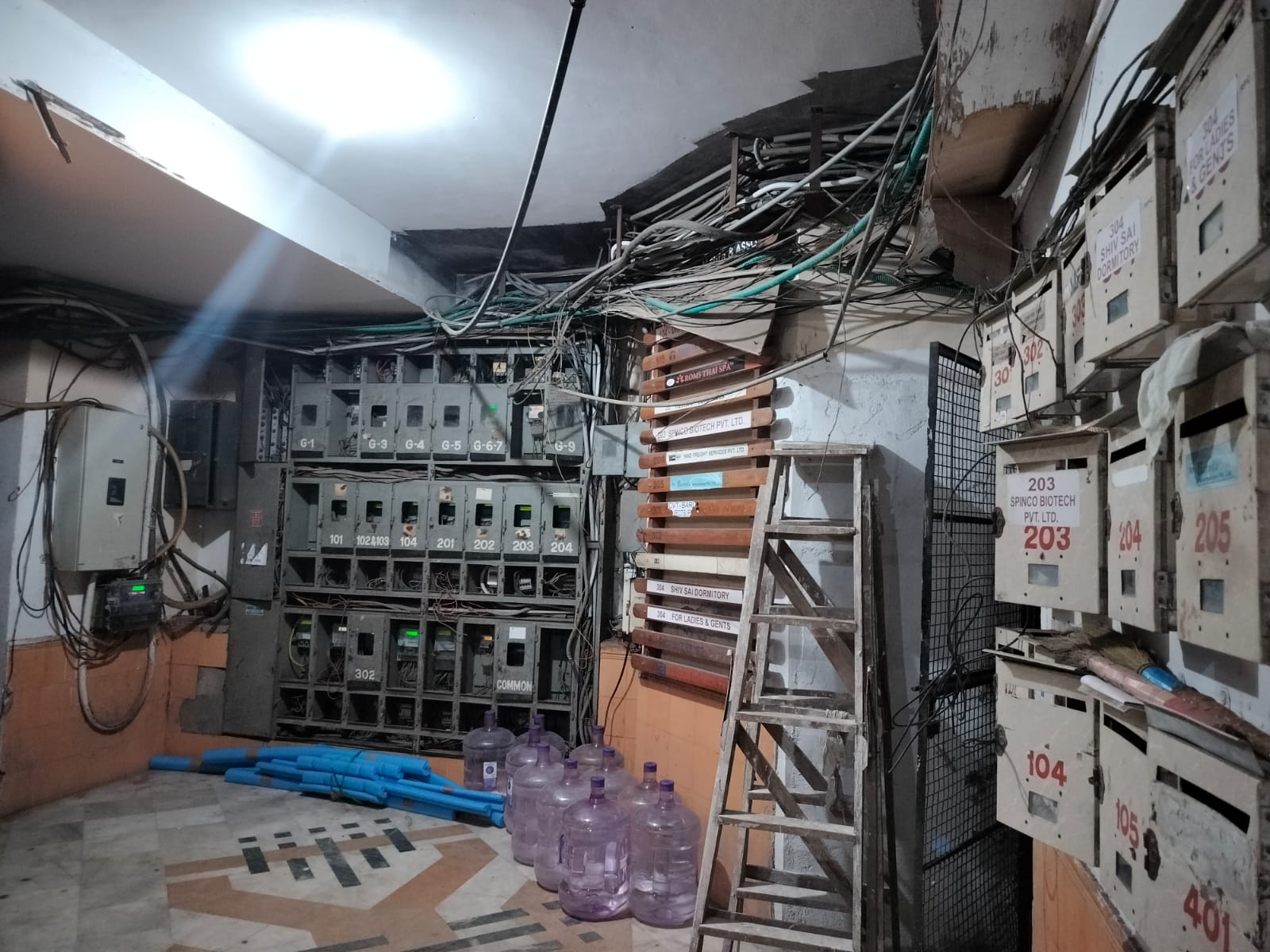

Mon - Sat 9:00 - 17:30

🚨 A Shocking Discovery in a Commercial Building — A Wake-up Call for Fire Safety in Public Spaces
Recently, I visited a commercial building for a meeting. Out of curiosity — and habit as a fire safety professional — I decided to take the stairs instead of the lift.
What I encountered left me both shocked and deeply concerned.
The staircase shaft, which should ideally serve as a lifeline during emergencies, was filled with unorganized electrical cables running through the area without any proper trunking or fire-resistant conduit.
Even more alarming was the fact that the building had only one stairwell — serving as both entry and exit, which is a major violation of basic fire and life safety norms.
To add to the concern, the first floor was being used as a kids’ activity area, and I saw parents accompanying their children there — completely unaware of the potential hazard.
In the event of a fire or smoke incident, this single compromised exit route could turn fatal within minutes.
In a fire emergency, staircases are the primary means of safe evacuation.
When staircases are obstructed, improperly designed, or shared with electrical utilities, the risk of smoke spread and flame propagation increases exponentially.
Many commercial spaces, especially those retrofitted or converted for new uses, overlook these fundamental safety aspects due to design negligence or cost-cutting. But such lapses directly endanger human life — especially vulnerable occupants like children.
Below is a summary of the National Building Code (NBC) 2016, Part 4 – Fire and Life Safety and relevant Indian Standards (IS) applicable to the scenario:
| Safety Aspect | Regulatory Reference (NBC 2016 / IS) | Requirement Summary |
|---|---|---|
| Electrical Cable Routing in Escape Routes | NBC Part 4, Cl. 3.4.6.2; IS 1646:2018 (Fire Safety of Buildings – Electrical Installations) | Electrical wiring/cable trays shall not pass through staircases, lift shafts, or exit passages unless enclosed in 2-hour fire-rated ducts or trunking. Penetrations must be sealed with fire-stopping compounds. |
| Separation Between Electrical Cables & Exit Paths | NBC Part 4, Cl. 3.4.6.3; IS 2309:1989 | Maintain minimum 1.2 m clearance between electrical systems and exit corridors. Cables in exit enclosures must be fire-resistant, low-smoke, and halogen-free. |
| Number of Staircases (Means of Egress) | NBC Part 4, Cl. 4.4.1.2 & Table 7 | Every building above 15 m height must have at least two staircases, one of which shall be fire escape type and remote from each other. |
| Width of Staircase | NBC Part 4, Table 7 | Minimum widths: 1.0 m (commercial), 1.2 m (assembly), 1.5 m (educational/child activity areas). |
| Fire Door & Enclosure of Staircase | NBC Part 4, Cl. 4.4.2.3, Cl. 4.4.2.4 | Staircases must be enclosed with 2-hour fire-rated walls and self-closing fire doors of minimum 1-hour rating at each floor level. |
| Occupancy Classification (Use of Space) | NBC Part 4, Table 1 | Kids’ activity zones fall under Assembly (A-3) or Educational (E) occupancy, requiring higher life safety measures including separate exits and compartmentalization. |
| Pressurization of Staircases | NBC Part 4, Cl. 4.4.2.5 | Staircases in multi-storey buildings must have mechanical pressurization to prevent smoke entry. |
| Exit Signage & Emergency Lighting | NBC Part 4, Cl. 4.6.7.2; IS 3646:1987 (Illumination Standards) | Exit signage shall be illuminated and visible in all conditions. Emergency lighting must operate for minimum 90 minutes after power failure. |
| Fire Detection & Alarm Systems | NBC Part 4, Cl. 7.1.1; IS 2189:2008 | Automatic detection systems are mandatory for assembly and commercial buildings to provide early warning. |
| Fire Resistance of Service Ducts | NBC Part 4, Cl. 3.4.10.2 | Service ducts carrying utilities shall have 2-hour fire-rated enclosures with separate shafts for electrical and communication lines. |
Never compromise the escape route — it’s the most vital part of your building’s life safety system.
Conduct a fire safety audit at least once a year by a qualified fire professional.
Re-route electrical cables away from staircases and exits using fire-rated trunking and junctions.
Ensure a minimum of two staircases for commercial or assembly occupancies.
Install fire-rated doors and maintain pressurization systems in stairwells.
Train your occupants — conduct regular fire evacuation drills, especially in facilities with children or public gatherings.
Display evacuation maps and contact numbers at prominent locations.
Fire safety is not just about compliance — it’s about responsibility.
Every owner, architect, and facility manager must ensure that the space they design or operate does not become a potential trap in an emergency.
That day, what I witnessed was not just a code violation — it was a potential tragedy waiting to happen.
Let’s not wait for an incident to remind us of the value of prevention.
Safety isn’t an expense; it’s a moral and professional obligation.